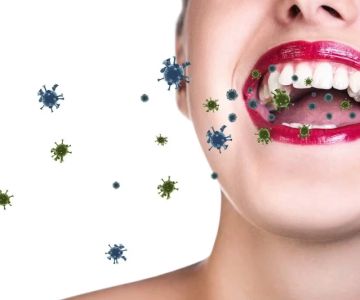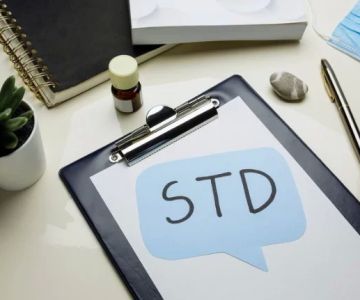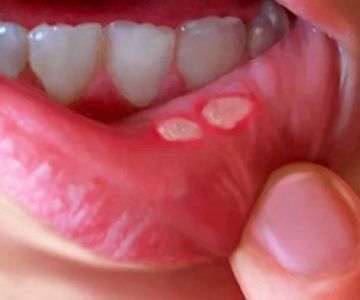
1. Understanding the Real Risk for Men During Oral Sex
Oral sex is widely perceived as a “safer” alternative to vaginal or anal intercourse, but that belief has led many people—especially men—to underestimate the real risk of sexually transmitted diseases. Giving oral sex can, in fact, expose men to a wide range of STDs, many of which may present without symptoms but carry long-term health consequences. The tissues of the mouth, tongue, throat, and gums are all vulnerable entry points for infectious agents.
In a 2023 study published in the *Journal of Sexual Health*, 38% of men who regularly performed oral sex on female or male partners tested positive for at least one oral STI, despite believing their activity was low-risk. This data sheds light on a growing concern in public health: many individuals unknowingly carry and transmit infections orally.
2. Common STDs Men Can Contract Through Giving Oral Sex
2.1 Human Papillomavirus (HPV)
HPV is one of the most commonly transmitted viruses through oral sex. Men who give oral sex to partners carrying high-risk strains are at greater risk for developing oropharyngeal cancers, especially if exposed repeatedly over time. According to the CDC, cases of HPV-related throat cancer in men now surpass those caused by tobacco use.
One case that gained media attention in 2022 was that of a professional singer in Atlanta who lost his vocal range due to an undetected HPV-related lesion in his throat. After undergoing surgery and treatment, he became a vocal advocate for HPV vaccination among adult males.
2.2 Herpes Simplex Virus (HSV)
Herpes can be transmitted from a partner's genitals to a man's mouth or lips during oral sex. Both HSV-1 and HSV-2 are capable of causing painful oral sores, and once infected, the virus remains in the body for life. Symptoms may come and go, with some outbreaks triggered by stress, illness, or fatigue.
Many individuals with genital herpes show no visible sores but can still pass the virus. This makes oral exposure particularly risky for men who perform oral sex without protective barriers.
2.3 Gonorrhea
Men who give oral sex to infected partners can develop gonorrhea in the throat, known as pharyngeal gonorrhea. While symptoms are often mild—such as a sore throat or swollen glands—untreated infections can persist and even spread to the bloodstream. The concern has grown in recent years with the emergence of antibiotic-resistant strains.
One 2021 study from New York City clinics found that nearly 1 in 10 men who tested positive for gonorrhea had no symptoms but had developed resistance to common treatments, complicating recovery and increasing the risk of transmission to others.
2.4 Chlamydia
Though less common in the throat than the genitals, oral chlamydia can be transmitted when men give oral sex to infected partners. Infections may go unnoticed for weeks, with some men mistaking symptoms for allergies or common colds. If untreated, chlamydia can lead to complications like reactive arthritis.
Because oral chlamydia does not typically trigger significant symptoms, routine STI screenings that include throat swabs are critical for detection and treatment.
2.5 Syphilis
Syphilis can be transmitted during oral sex through microscopic breaks in the skin or mucous membranes. The infection typically begins with a small sore called a chancre, which may appear on the lips, tongue, or inside the mouth. If missed or ignored, syphilis can progress to more severe stages, affecting the heart, nervous system, and brain.
In a notable 2022 report from Los Angeles, public health officials identified a rise in oral syphilis cases among heterosexual men, prompting a local campaign to raise awareness about early testing and barrier protection.
2.6 HIV (Human Immunodeficiency Virus)
While the risk of HIV transmission through oral sex is lower than with other forms of sex, it is still possible—especially if the receiving partner is HIV-positive and the man has open sores, bleeding gums, or oral infections. Pre-existing oral conditions significantly increase susceptibility.
Saliva alone contains enzymes that reduce HIV transmission, but semen, pre-ejaculate, and menstrual blood can all carry high viral loads. Men with untreated periodontal disease or gum recession are at even greater risk.
3. How Oral Health Influences STD Risk
3.1 Gum Disease and Bleeding Gums as Entry Points
Poor oral hygiene can raise the risk of contracting an STI through oral sex. Infections like gingivitis and periodontitis create open wounds in the mouth, offering a direct route for viruses and bacteria to enter the bloodstream.
A man who has untreated gum disease and gives oral sex to a partner with an active STD is far more likely to become infected. Regular brushing, flossing, and dental checkups reduce the presence of inflammation and help maintain a protective barrier in the mouth.
3.2 Dental Procedures and Oral Exposure Risk
Men who have recently undergone dental work—such as cleanings, extractions, or surgery—should avoid oral sex until tissues are fully healed. Open wounds increase the chances of viral or bacterial invasion. Dentists and sexual health providers often advise a waiting period of 7 to 10 days post-procedure.
Family Dentistry Online offers tailored guidance on post-treatment safety, ensuring your mouth is healthy and less vulnerable to infections before engaging in sexual activity.
4. Safer Practices for Reducing Risk During Oral Sex
4.1 Use of Protection and Barriers
Condoms and dental dams significantly reduce the risk of STDs during oral sex. While they may not be used as frequently for oral contact, flavored and ultra-thin options are available to encourage their use. Choosing safe, latex-free alternatives can improve comfort and reduce the chance of allergic reactions.
Avoiding oral sex during active outbreaks or visible signs of infection—such as sores, bumps, or unusual discharge—can further reduce risk.
4.2 Regular Testing and Honest Communication
Men who are sexually active should undergo STI screenings every 3 to 6 months, especially if they have multiple partners. Communicating openly with partners about recent test results helps foster responsible decision-making.
Some health providers now include throat and rectal swabs during routine checkups. Requesting these additional tests ensures a more comprehensive evaluation.
4.3 Maintain Strong Oral Hygiene
Good oral hygiene isn’t just about fresh breath—it’s a protective factor against disease. Brushing twice a day, flossing daily, and using alcohol-free mouthwash can maintain gum health and reduce bacteria that might contribute to infection. Avoid brushing immediately before oral sex, as it can cause small abrasions in the mouth.
For men looking to protect both their oral and overall health, Family Dentistry Online offers professional advice, dental services, and personalized care tailored to every stage of life.







 Westgate Dental Arts3.0 (2 review)
Westgate Dental Arts3.0 (2 review) Coventry Family Dental4.0 (247 review)
Coventry Family Dental4.0 (247 review) Familia Dental3.0 (1028 review)
Familia Dental3.0 (1028 review) Dr. Daniel S. Fife, DDS4.0 (31 review)
Dr. Daniel S. Fife, DDS4.0 (31 review) Dentistry At Suburban Square: Michael I. Wollock, DMD4.0 (1228 review)
Dentistry At Suburban Square: Michael I. Wollock, DMD4.0 (1228 review) Comfort Care Dental4.0 (1156 review)
Comfort Care Dental4.0 (1156 review) The Importance of Oral Health Education During Pregnancy for a Healthy Pregnancy
The Importance of Oral Health Education During Pregnancy for a Healthy Pregnancy Why Skipping Dental Checkups Can Lead to Bigger Oral Health Problems
Why Skipping Dental Checkups Can Lead to Bigger Oral Health Problems Best Tips for Brushing Your Teeth Properly for Healthy Gums: Essential Techniques for Oral Health
Best Tips for Brushing Your Teeth Properly for Healthy Gums: Essential Techniques for Oral Health Advantages of Porcelain Dental Restorations
Advantages of Porcelain Dental Restorations How Can Diabetes Cause Tooth and Gum Problems? Preventing and Managing Oral Health Issues
How Can Diabetes Cause Tooth and Gum Problems? Preventing and Managing Oral Health Issues Healthy Habits for Promoting Good Oral Health and Hygiene: Tips for a Healthy Smile
Healthy Habits for Promoting Good Oral Health and Hygiene: Tips for a Healthy Smile